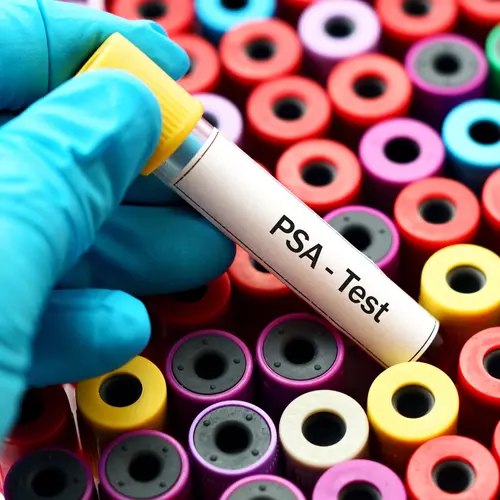Erectile dysfunction, also called impotence, is the inability to develop or sustain an erection satisfactory for sexual intercourse.
Though prostate cancer is not a cause of erectile dysfunction, treatments for the disease can cause the problem. Among them:
- Surgery to remove the entire prostate gland
- Radiation therapy, whether by external beam or radioactive seed implants
- Hormone therapy
Different treatments can lead to impotence sooner than others.
When Can Erectile Dysfunction Occur After Treatment?
- Surgery. Some degree of erectile dysfunction usually occurs right after surgery to remove the prostate, regardless of whether the technique is performed that tries to spare the nerve that controls erections.
The severity of the erectile dysfunction depends on the type of surgery, stage of cancer, and skill of the surgeon.
If the nerve-sparing technique is used, recovery from erectile dysfunction may occur within the first two years following the procedure. Recovery of erectile function after a non-nerve-sparing surgery is unlikely but possible.
The use of vacuum devices or erectile dysfunction drugs after the body has healed from surgery may improve the quality of erections and speed the return of normal sexual function (see below).
If an erection can be achieved after surgery, one does not lose the ability to have an orgasm. However, they may be "dry" orgasms in which little (if any) ejaculate is produced. This results in infertility for most men, although most men are older when they are diagnosed for prostate cancer and may not be concerned. If desired, you could talk to your doctor about "banking" sperm before the procedure.
- Radiation therapy. The onset of erectile dysfunction following radiation therapy is gradual and usually begins about six months following the treatment.
Erectile dysfunction is the most common long-term complication of radiation therapy. However, its occurrence may decrease when more sophisticated treatments are used, such as radioactive seed implants (brachytherapy), intensity-modulated radiotherapy (IMRT), or 3-D conformal radiotherapy.
- Hormone therapy. When hormone therapy is used, erectile dysfunction and decreased sexual desire may result approximately two to four weeks after the start of therapy. This is due to the testosterone-reducing action of the drugs.
How Is Erectile Dysfunction Treated?
Current treatment options for erectile dysfunction for men who have received treatment for prostate cancer include:
- Oral medications, such as tadalafil (Cialis), vardenafil (Levitra, Staxyn), avanfil (Stendra), or sildenafil (Revatio, Viagra)
- Injections of medicine into the penis before intercourse (called intracavernous injection therapy)
- Use of a vacuum constriction device to draw blood into the penis to cause an erection
- Drugs taken as a suppository placed in the penis prior to intercourse
- Penile implants
How Effective Are Oral Erectile Dysfunction Drugs?
- Following surgery, up to 70% of men who have had nerves spared on both sides of the prostate will regain erections with the use of one or more oral drugs for erectile dysfunction. Results are less favorable for men who have had a single nerve spared or no nerves spared.
- Following radiation therapy, overall, 50% to 60% of men regain erections with medication. However, current data are rather limited, especially for patients treated with radioactive seed implants.
- Hormone therapy. Men treated with hormone therapy do not respond well to any erectile dysfunction treatments, but data are limited.
How Effective Is Injection Therapy With Each Type of Treatment?
If oral erectile dysfunction drugs fail, injections into the penis can be an effective form of treatment for men who have undergone surgery or who have received radiation therapy (whether by external beam or seed implants) for prostate cancer.
Overall, up to 80% of men will regain erections with the use of injection treatments. Side effects include occasional pain due to one of the drugs used for injection therapy, and the development of scar tissue.
What About Other Treatments for Erectile Dysfunction?
If Viagra and injections fail (or if you are unwilling or unable to use either therapy), other treatments may be appropriate. They include:
- Vacuum constriction device. A cylinder is placed over the penis. The air is pumped out of the cylinder, which draws blood into the penis and causes an erection. The erection is maintained by slipping a band off the base of the cylinder and onto the base of the penis. The band can stay in place for up to 30 minutes. Although these devices can be effective, they generally have been less desirable for patients who have been treated with surgery. Many patients dislike having to use the band at the base of the penis and find it uncomfortable.
- Penile suppositories. For this treatment, the patient places a suppository into the urinary tube (urethra) using a plastic applicator. The suppository contains the drug alprostadil, which travels to the erection chambers. Alprostadil relaxes the muscle in the erection chamber, allowing blood to flow into the penis.
- Penile implants. This option may be considered if the patient has had erectile dysfunction for about one year following cancer treatment and nonsurgical therapy has either failed or is unacceptable. An implant, or prosthesis, is an effective form of therapy in many men, but it does require an operation to place the implant into the penis. Surgery can cause problems, such as mechanical failure or infection, which may require removal of the prosthesis and re-operation. However, most men and their partners are very satisfied with these devices.

